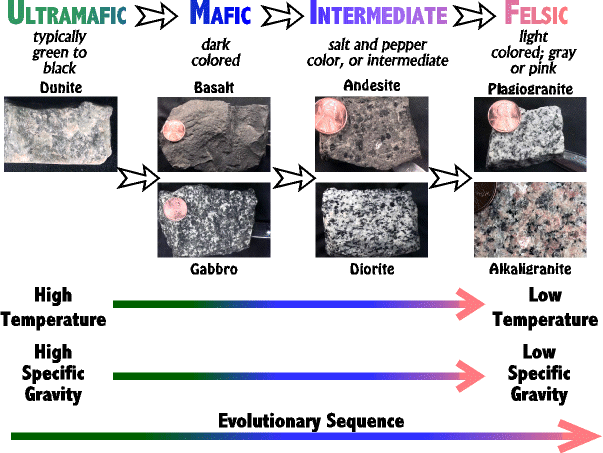A PRIMER ON IGNEOUS ROCKS
To understand plate tectonic theory, we need to talk about igneous rocks in more detail. If you are unfamiliar with igneous rocks all you need to know to start are a few facts, summarized in the chart below (and described below).
Igneous rocks are divided into four categories, ultramafic, mafic, intermediate, and felsic. Each category contains a variety of rocks you may have heard of, such as basalt, andesite, granite, etc. The chart above contains labeled pictures of the more common igneous rocks.
These four categories, in the order ultramafic, mafic, intermediate, and felsic, have consistent trends in just about every property.
For example, they go from high temperature forming to low temperature, from dark colored rocks to light colored rocks, and from heavy rocks to light rocks.
In addition, these rocks evolve from ultramafic, to mafic, to intermediate, to felsic.
If you understand these few ideas you will understand the plate tectonic primer. For more about igneous rocks you can read the following other sites.
Go On To: